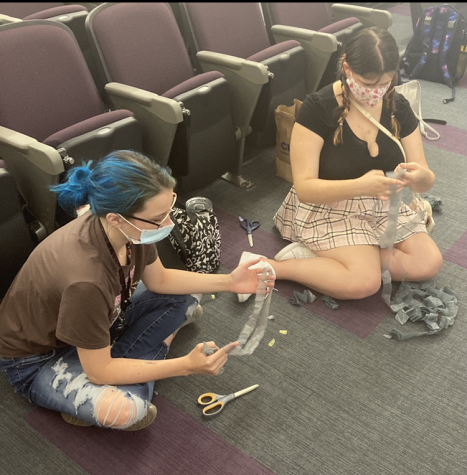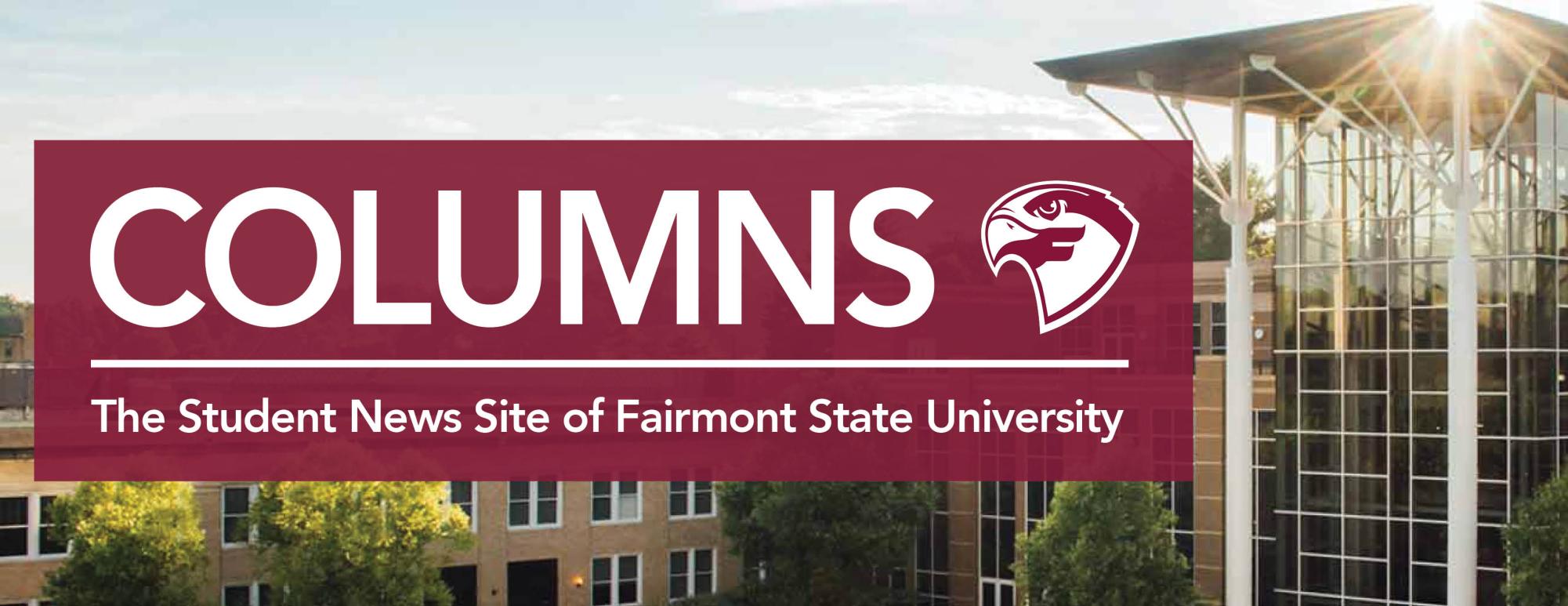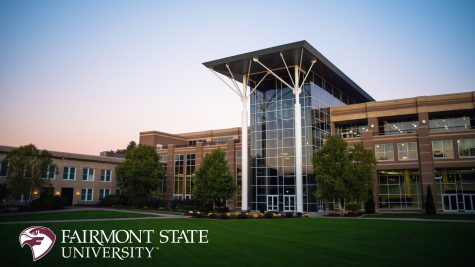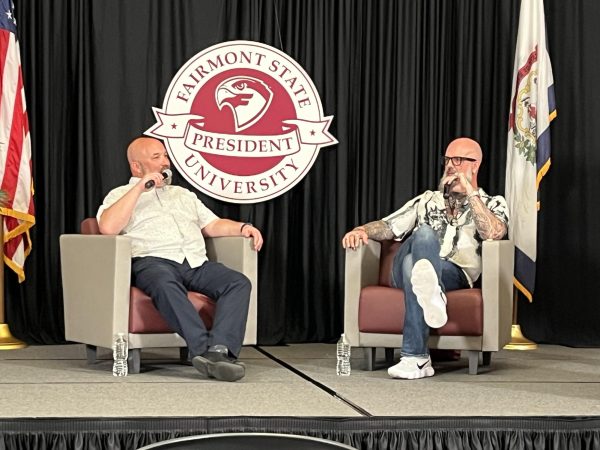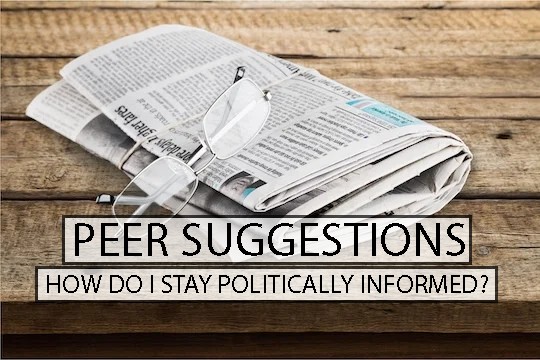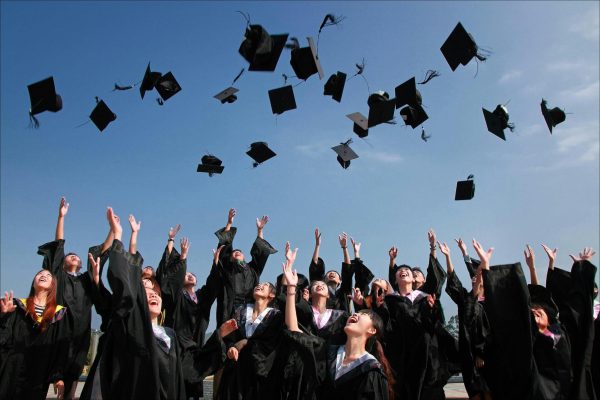The Creative Sustainability Council at Fairmont State
On Thursday, August 26 the Fairmont State Honors Program had their first Lobby Talk of the year, “What Makes a Sustainable U”, hosted by Fairmont State professors Dr. Erica Harvey and Dr. Nathan Myers, on behalf of the Creative Sustainability Council. The Creative Sustainability Council is an interdisciplinary group of students, teachers, and other staff at Fairmont State whose goal is to collaborate on student-led sustainability projects and grant proposals for said projects. The program strives to bring sustainability on campus in engaging ways, to avoid the idea that sustainability must be practiced in strict ways. During the talk, students were encouraged to help make yarn out of recycled plastic bag strips, showing an easy sustainable practice that all students can take part in. The two professors shared the other creative ways students in the Council have begun to introduce sustainable practices on campus. They encourage all students to get involved with the program, no matter the experience level one has with sustainability.
One of the ways that students began introducing sustainable practices on campus was through composting. Dr. Harvey described how the students within the council always wanted to bring composting to Fairmont State, and last year they began by creating “Earth Cubes”, which are cubes that are heated to combine the various materials used for composting. However, in the end, the compost ended up being too wet for any practical use, but the students were not discouraged by this. Now the goal for composting this semester is to create Earth Cubes that can be used on campus soil.
Another project that the Creative Sustainability Council took on was creating a Recycling Report to document recycling on campus and see what could be done to improve the current recycling system in place. Dr. Myers noted that there was a confusion towards whether recycling was actually occurring on campus and this uncertainty made students apathetic to the practice. The report ended up being very helpful to see where and why recycling was not occurring on campus. In the future, the Creative Sustainability Council hopes to help reform recycling on campus so there is a new found confidence in students to recycle. Dr. Myers says about creating the report, “It was a slow process, but all it took was a handful of students to complete the report.”
The Council’s failure to create usable compost and the time it took to create the Recycling Report speaks to one of the most important things to remember when practicing sustainability, and that is sustainable practices take time to implement, often needing trial and error to perfect them. Dr. Harvey describes the dilemma of the time and often money it takes to adopt sustainable practices, “It is easier to do things cheaper, than to do things right.” However, the sustainability council strives to get Fairmont State to begin to do things “right”, despite the trial and error this might take.
When the teachers opened the talk up to student questions and comments, one student shared her experience with trying to introduce sustainability to her former high school. This initiative she took on was part of an Honors Seminar Special Topics Class on sustainability, taught by Dr. Myers. As a final project, students attempted to introduce sustainability practices somewhere, whether it be personal habits or within the community. Someone decided to compost with their family, another went to local hair salons and asked them to donate hair to create mats that would help clean up oil spills.
The student shared how she decided to go back to her small, private, Christian school that practiced no sustainability. She helped teachers incorporate Biblical lessons into environmental issues to get teachers to begin to teach sustainability practices. The student lamented that she did not think that any of what she introduced was still taught in the school, except for one 2nd grade teacher that did Earth Day lessons and projects for a week each year. However, though this change was small, it created a lasting impact on the school through the students who get to learn these lessons of sustainability and being environmentally-friendly. Progress for sustainability practices may be slow and taken in small steps, but just one person’s effort can still create lasting practices of sustainability. As Dr. Myers said on creating sustainability projects, “These things take time, we have to be patient, but change is happening. Persistence, passion, and caring pays off.”